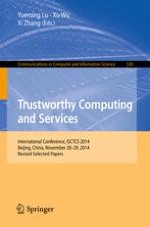2015 | OriginalPaper | Buchkapitel
DDoS Detection Based on Second-Order Features and Machine Learning
verfasst von : Xiaowei He, Shuyuan Jin, Yunxue Yang, Huiqiang Chi
Erschienen in: Trustworthy Computing and Services
Verlag: Springer Berlin Heidelberg
Aktivieren Sie unsere intelligente Suche, um passende Fachinhalte oder Patente zu finden.
Wählen Sie Textabschnitte aus um mit Künstlicher Intelligenz passenden Patente zu finden. powered by
Markieren Sie Textabschnitte, um KI-gestützt weitere passende Inhalte zu finden. powered by
